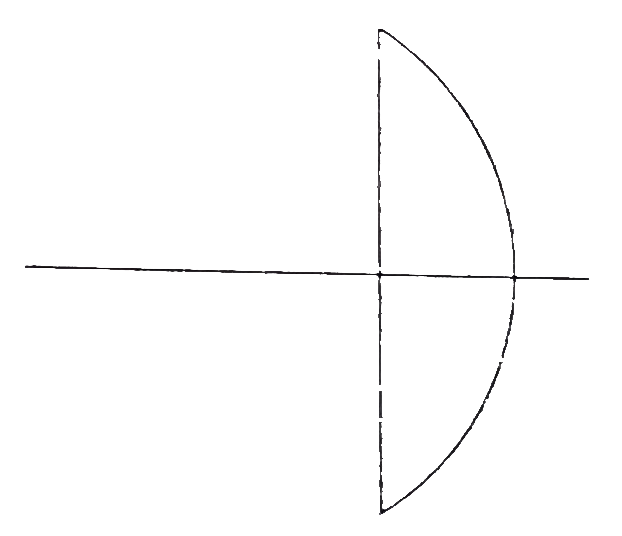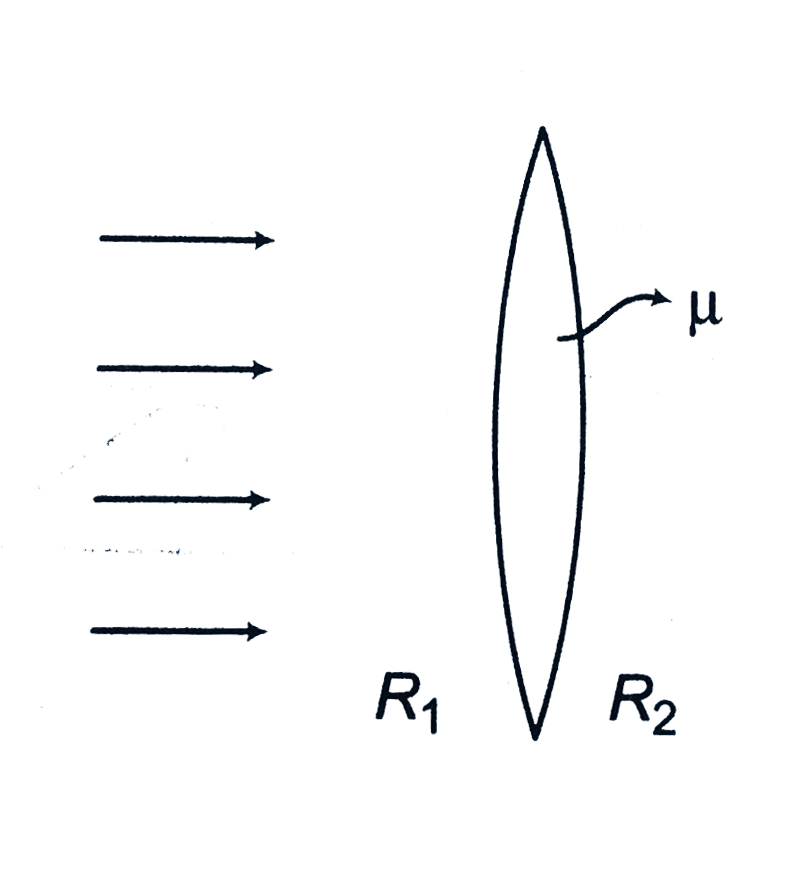A plano convex lens (μ=1.5) has a maximum thickness of
1mm .If diameter of its aperture 4cm Find
(i)Radius of curvature of curved surface
(ii) its focal length in air.
The correct Answer is:40
To solve the problem step by step, we will follow the given information and apply the relevant formulas.
Given:
- Refractive index of the lens, μ=1.5
- Maximum thickness of the lens, t=1 mm=0.1 cm
- Diameter of the aperture, D=4 cm (which gives a radius of aperture ra=2 cm)
(i) Finding the Radius of Curvature of the Curved Surface
1. Understanding the Geometry:
- The lens is plano-convex, meaning one side is flat (plane) and the other side is curved.
- The maximum thickness occurs at the center of the lens.
2. Using the Pythagorean Theorem:
- For a plano-convex lens, we can relate the radius of curvature R to the thickness t and the radius of the aperture ra.
- According to the Pythagorean theorem:
R2=r2a+(R−t)2
- Substituting the values:
R2=(2 cm)2+(R−0.1 cm)2
- Expanding the equation:
R2=4+(R2−0.2R+0.01)
- Simplifying:
0=4+0.01−0.2R
0.2R=4.01
R=4.010.2=20.05 cm≈20 cm
(ii) Finding the Focal Length in Air
1. Using the Lens Maker's Formula:
- The lens maker's formula is given by:
1f=(μ−1)(1R1−1R2)
- For a plano-convex lens:
- R1=R=20 cm (convex surface)
- R2=∞ (plane surface)
- Substituting the values into the formula:
1f=(1.5−1)(120−0)
1f=0.5⋅120=0.520=140
- Therefore, the focal length f is:
f=40 cm
Final Answers:
- (i) Radius of curvature R≈20 cm
- (ii) Focal length f=40 cm
- Refractive index of the lens, μ=1.5
- Maximum thickness of the lens, t=1 mm=0.1 cm
- Diameter of the aperture, D=4 cm (which gives a radius of aperture ra=2 cm)
- The lens is plano-convex, meaning one side is flat (plane) and the other side is curved.
- The maximum thickness occurs at the center of the lens.
- For a plano-convex lens, we can relate the radius of curvature R to the thickness t and the radius of the aperture ra.
- According to the Pythagorean theorem:
R2=r2a+(R−t)2
- Substituting the values:
R2=(2 cm)2+(R−0.1 cm)2
- Expanding the equation:
R2=4+(R2−0.2R+0.01)
- Simplifying:
0=4+0.01−0.2R
0.2R=4.01
R=4.010.2=20.05 cm≈20 cm
- The lens maker's formula is given by:
1f=(μ−1)(1R1−1R2)
- For a plano-convex lens:
- R1=R=20 cm (convex surface)
- R2=∞ (plane surface)
- Substituting the values into the formula:
1f=(1.5−1)(120−0)
1f=0.5⋅120=0.520=140
- Therefore, the focal length f is:
f=40 cm
- (i) Radius of curvature R≈20 cm
- (ii) Focal length f=40 cm
Similar Questions
Knowledge Check
What is the refractive index of material of a plano-convex lens , if the radius of curvature of the convex surface is 10 cm and focal length of the lens is 30 cm ?
A65B74C23D43
A plano-convex lens (μ=1.5) of aperture diameter 8cm has a maximum thickness of 4mm. The focal length of the lens relative to air is

View SolutionA plano convex lens is made of glass of refractive index 1.5. The radius of curvature of its convex surface is R. Its focal length is
View SolutionA biconvex lens (μ=1.5) has radius of curvature 20cm (both).
find its focal length.

View SolutionA planocovex lens is made of a material of refractive in μ=1.5 The radius of curvature of curved surface of the lens is 20.cm. If its plane surface3 is silvered, the focal length of the silvered lens will be
View SolutionA thin plano-convex lens acts like a concave mirror of radius of curvature 20cm when its plane surface is silvered. The radius of curvature of the curved surface if index of refraction of its matarial is 1.5 will be
View SolutionA thin plano-convex lens acts like a concave mirror of radius of curvature 20cm when its plane surface is silvered. The radius of curvature of the curved surface if index of refraction of its matarial is 1.5 will be
View SolutionThe convex surface of a plano-convex lens is silvered and the radius of curvature of this surface is R. Find the focal length of the system:
View Solution
